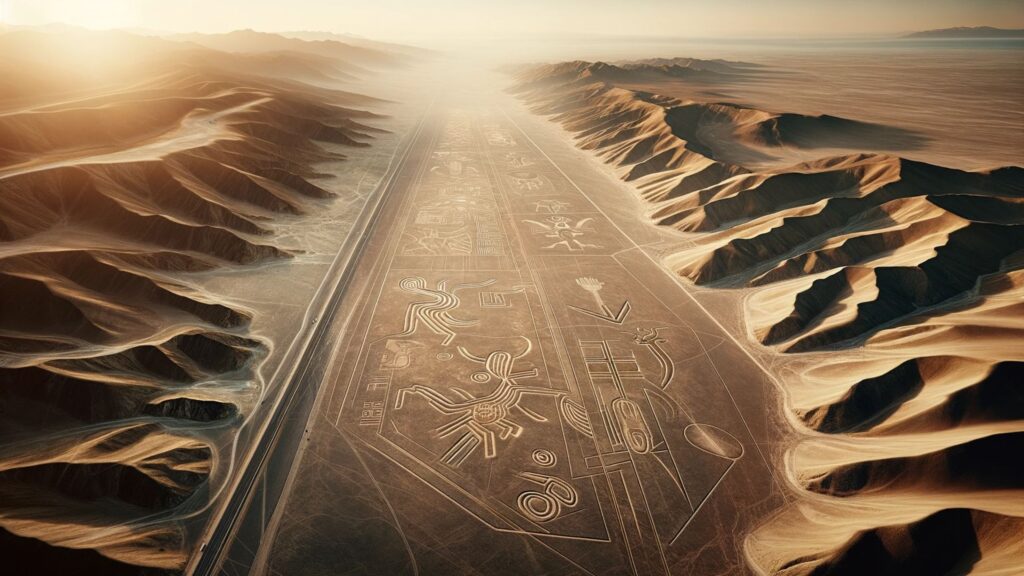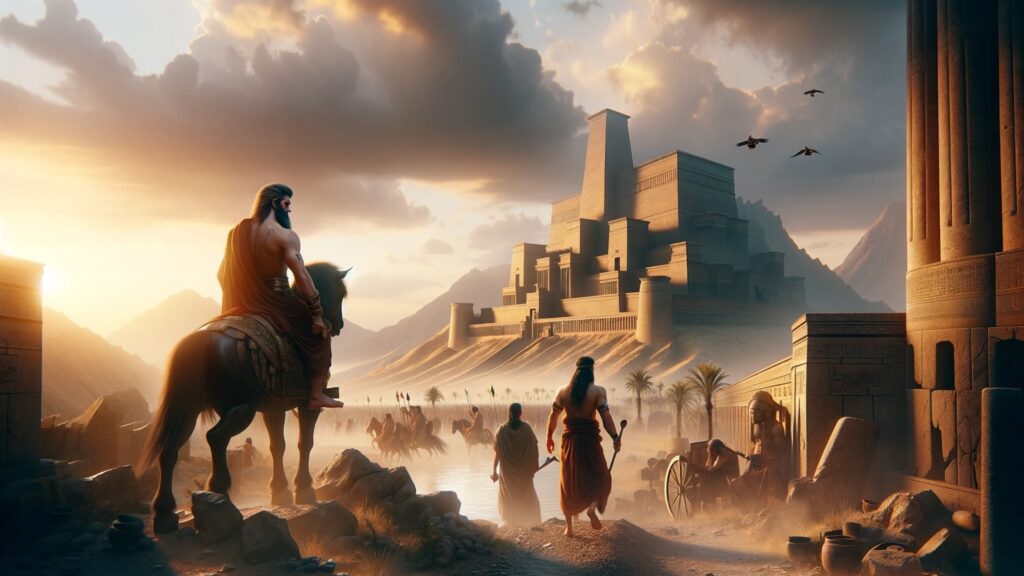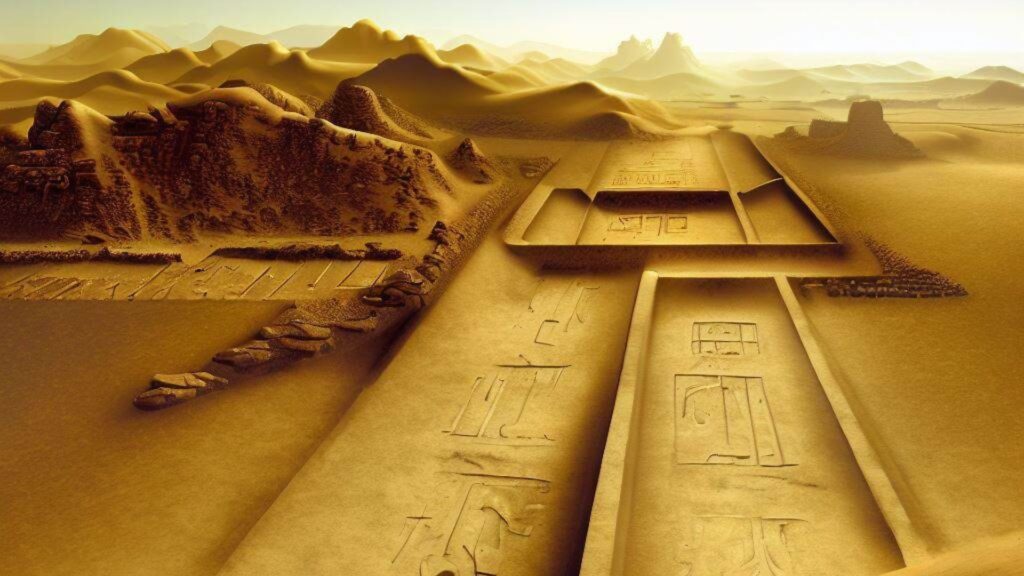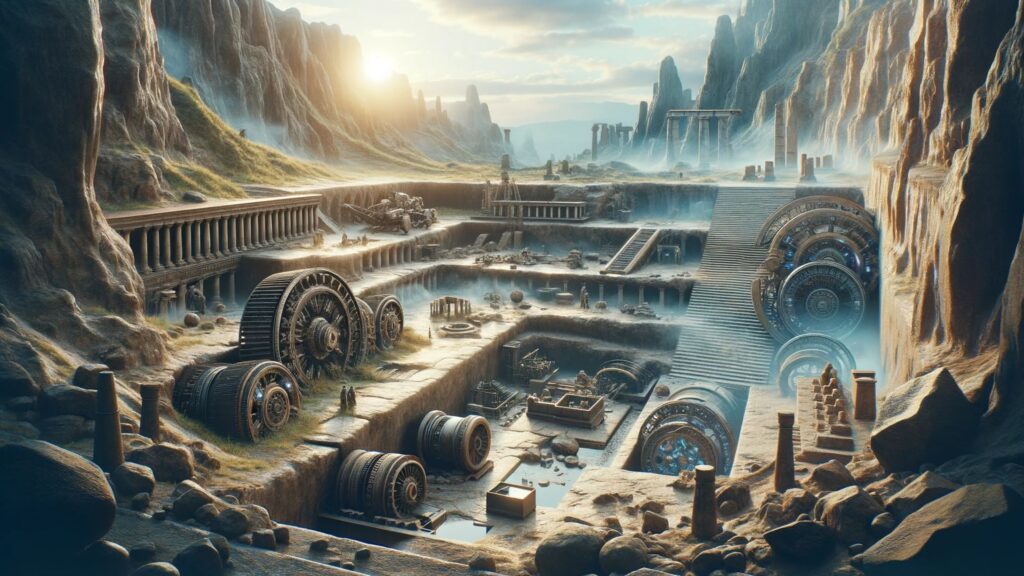Introduction
The Enduring Fascination with Extraterrestrial Life
Have you ever gazed up at the stars and wondered if we’re truly alone in this vast universe? This question has captivated humanity for centuries, fueling a deep-seated fascination with extraterrestrial life.
From the earliest cave paintings to modern science fiction, the idea of life beyond our planet has permeated our collective consciousness. It’s a topic that not only ignites our imagination but also challenges our understanding of life and our place in the cosmos.
Delving into Ancient Astronaut Theories and Speculative Interpretations

Now, let’s embark on a journey through time, where ancient texts and archaeological discoveries intertwine with the extraordinary. The concept of ancient astronaut theories brings a provocative twist to our historical narratives.
These theories suggest that beings from other worlds may have visited Earth in antiquity, influencing human civilizations. Imagine ancient carvings depicting celestial beings or scriptures narrating skyward journeys—could these be mere myths, or are they echoes of actual encounters with extraterrestrial entities?
From the colossal pyramids of Egypt to the mystifying Nazca Lines in Peru, numerous archaeological findings have been viewed through the lens of these theories.
While mainstream archaeology and history attribute these wonders to human ingenuity and cultural expressions, proponents of ancient astronaut theories offer an alternative perspective—perhaps our ancestors were guided or inspired by visitors from the stars.
Our Quest for Answers: Exploring the Evidence

In this exploration, we’ll dive into various examples where ancient texts and artifacts have been interpreted as evidence of extraterrestrial contact.
This isn’t just about unraveling historical mysteries; it’s about broadening our horizons and challenging our understanding of the past. By examining these interpretations with an open yet critical mind, we can appreciate the rich tapestry of human history and possibly glimpse a connection to the stars.
Stay with me as we journey through time and space, exploring the enigmatic and the unknown. Together, let’s discover whether these ancient narratives and artifacts are mere stories or if they hide secrets that could redefine our understanding of history and our place in the universe.
The Ancient Astronaut Theory: Bridging Mythology and Cosmic Mysteries

Unpacking the Ancient Astronaut Theory
Imagine a world where our ancestors interacted with visitors from distant stars. This is the core of the Ancient Astronaut Theory, a fascinating blend of science fiction and speculative history.
At its heart, this theory proposes that extraterrestrial beings visited Earth in ancient times, influencing the development of human civilizations. It suggests that many of the mythological gods, supernatural events, and even technological advancements mentioned in ancient texts and depicted in archaeological finds might have extraterrestrial origins.
Trailblazers of the Cosmic Puzzle: Erich von Däniken and Others
The Ancient Astronaut Theory was propelled into the public eye by figures like Erich von Däniken, whose book “Chariots of the Gods” became a bestseller in the late 1960s. Von Däniken’s work, filled with captivating ideas and bold assertions, sparked a global conversation.
He, along with others like Zecharia Sitchin, who explored similar themes in his writings about ancient Mesopotamia, laid the groundwork for a new perspective on human history. Their works have not only influenced popular culture but have also ignited debates and discussions among scholars, scientists, and enthusiasts alike.
Core Claims of the Ancient Astronaut Theory
Let’s delve into the central claims of this theory. It posits that many ancient artifacts and architectural marvels are too advanced, too mysterious, or too aligned with astronomical phenomena to be the work of early humans alone.
This includes the precise construction of the Egyptian pyramids, the enigmatic stone structures of Puma Punku, and the intricate carvings in ancient Indian temples that resemble modern technology. According to proponents, these are not just feats of human engineering but potentially bear the fingerprints of advanced extraterrestrial influence.
Moreover, the theory often turns to ancient texts – from the biblical Ezekiel’s vision of the “wheel within a wheel” to the flying Vimanas described in Indian epics – interpreting them as accounts of ancient encounters with alien technology or beings.
The argument extends to artworks and cave paintings depicting humanoid figures with unusual features or objects resembling flying crafts, interpreted as potential evidence of alien visitation.
The Nazca Lines in Peru: Ancient Artistry or Celestial Signs?

An Aerial Tapestry of Mystery: Understanding the Nazca Lines
Soar above the arid plains of southern Peru, and you’ll witness one of the most mystifying spectacles of the ancient world: the Nazca Lines. These colossal geoglyphs, etched into the desert sands, form an array of intricate designs ranging from simple lines and geometric shapes to stunning representations of animals and humans.
Created by the Nazca culture between 500 BCE and 500 CE, these lines have survived centuries, primarily due to the region’s stable climate and minimal wind erosion.
The Nazca Lines cover an area of nearly 1,000 sq. km, with some individual figures measuring up to 370 m in length. Their sheer size and complexity have bewildered observers for decades, leading to questions about their purpose and creation. Were these just artistic expressions, sacred pathways, or something more?
The Ancient Astronaut Perspective: Decoding Extraterrestrial Clues
Enter the realm of the Ancient Astronaut Theory, where the Nazca Lines take on an interstellar significance. Proponents of this theory suggest that these geoglyphs were created either as signals or landing strips for visiting extraterrestrial spacecraft.
They argue that the lines’ vast scale and precision, visible best from the air, imply a connection to beings who could view them from above. Some even speculate that the Nazca people created these designs with guidance from alien visitors as a way to communicate with or honor these celestial entities.
The View from Archaeology: Grounded in Culture and Ritual
Contrast this with the mainstream archaeological understanding, which is firmly rooted in historical and cultural contexts. Scholars have extensively studied the Nazca Lines and generally agree that they were significant in the religious and social practices of the Nazca culture.
The lines are thought to have been part of ritualistic ceremonies, possibly related to water and fertility, vital concerns in such an arid landscape. Their alignment with astronomical events and the surrounding topography suggests a sophisticated understanding of their environment, but not necessarily an extraterrestrial one.
Additionally, the methods of their creation are well understood. The Nazca people removed the reddish-brown iron oxide-coated pebbles that covered the surface of the Nazca desert and revealed the light-colored Earth beneath.
This relatively simple technique, combined with the use of wooden stakes to maintain straight lines, suggests human ingenuity rather than alien intervention.
The Egyptian Pyramids: Monuments of Mystery and Mastery

The Great Pyramid of Giza: An Architectural Wonder
Standing tall on the Giza Plateau, the Great Pyramid of Giza has been a symbol of awe and mystery for millennia. Constructed for the Pharaoh Khufu around 2580-2560 BC, it is the oldest and largest of the three pyramids in Giza and was the tallest man-made structure in the world for over 3,800 years.
Composed of approximately 2.3 million blocks of stone, each weighing an average of 2.5 to 15 tons, the pyramid originally stood at 146.6 meters (481 feet) tall, though it has slightly reduced in height over time.
The precision and scale of the pyramid, particularly its alignment with the cardinal points and the complex internal chambers, have fueled endless fascination and theories about its construction and purpose.
The Great Pyramid is a testament to the ingenuity and skill of ancient Egyptian civilization, serving both as a monumental tomb and a symbol of the pharaoh’s power and divine role in maintaining order in the universe.
Extraterrestrial Theories: A Cosmic Connection?
The sheer magnitude and precision of the Great Pyramid have led some to speculate about extraterrestrial involvement in its construction. Proponents of this view argue that the technological and architectural sophistication evident in the pyramid exceeds what would have been possible for the ancient Egyptians of the time.
They suggest that the alignment of the pyramids with Orion’s Belt and other astronomical features could be evidence of advanced astronomical knowledge imparted by alien visitors.
These theories often point to the lack of definitive historical records explaining the pyramid’s construction techniques as a gap that could potentially be filled by extraterrestrial influence.
The enduring mystery surrounding the pyramid only adds to the allure of such theories, captivating the imagination of those who ponder the origins of this ancient marvel.
The Archaeological and Historical Perspective
Contrasting with the extraterrestrial theories, archaeological and historical research provides a more grounded explanation of the pyramid’s construction.
This research points to the pyramid being built by a large workforce of skilled laborers and not slaves, as commonly misconceived. Evidence shows that these workers were well-fed and housed in a nearby temporary city.
Archaeologists have uncovered tools, remnants of worker’s camps, and detailed records that shed light on the organization and logistics involved in the pyramid’s construction.
The use of ramps, levers, and a sophisticated understanding of mathematics and geometry are believed to have played a crucial role in the pyramid’s construction.
Additionally, the alignment with celestial bodies and the internal structure reflects the Egyptians’ deep connection with their spiritual and cosmological beliefs rather than extraterrestrial influence.
For an intriguing exploration of the Great Pyramid of Giza and its purpose, which delves beyond the traditional view of it being a tomb for Pharaohs, check out the insightful article on Atmospheric Lights. This piece presents compelling arguments and evidence suggesting alternative functions of this ancient wonder. Read the full article here to discover more about this fascinating perspective.
Ancient Indian Texts: Vimanas – Vehicles of the Gods or Mythical Metaphors?

Mystical Vimanas in the Mahabharata and Ramayana
Dive into the rich tapestry of ancient Indian epics, and you’ll encounter the vimanas – described in texts like the Mahabharata and Ramayana as magnificent flying machines.
These texts, composed over thousands of years, have played a crucial role in shaping the cultural and spiritual framework of India. The vimanas are depicted as variously shaped aerial vehicles, from chariots to larger palace-like structures, capable of incredible feats and used by the gods and heroes of these epics.
The descriptions of vimanas are intriguingly detailed. Some accounts describe them as glowing with light, moving through the sky with speed and grace, and equipped with weaponry and other technologies. They are often associated with the gods or celestial beings, adding a layer of mystique and divine power to these narratives.
Extraterrestrial Theories: Deciphering Ancient Technology
The detailed descriptions of vimanas have caught the attention of ancient astronaut theorists, who propose that these texts might actually be documenting encounters with advanced technology, possibly of extraterrestrial origin.
They argue that the sophisticated capabilities attributed to vimanas – such as flying into space, traveling underwater, or emitting destructive rays – go beyond mere mythological constructs and could indicate a historical record of advanced technologies not known to have existed in ancient India.
These theorists often suggest that the ancient Indians either witnessed extraterrestrial vehicles or were themselves recipients of advanced knowledge from otherworldly visitors, reflected in their texts as mythical stories.
Scholarly Insights: Understanding Vimanas in Cultural Context
Mainstream scholars, however, provide a different perspective. They interpret vimanas within the cultural and mythological context of the times when these epics were written.
Scholars emphasize that the epics are primarily religious and mythological texts, not historical accounts. They view the descriptions of vimanas as allegorical or symbolic, reflecting the human imagination and the cultural understanding of the cosmos and divine intervention.
Furthermore, experts in Indian literature and history point out that these texts were composed over centuries, with layers of storytelling reflecting the evolving philosophical and cultural milieu of ancient India.
In this view, vimanas are seen as an integral part of the mythological world of the epics, representing the power and majesty of the gods and serving as metaphors for spiritual and divine prowess.
The Epic of Gilgamesh: Ancient Narrative of Gods and Cosmic Quests

Unveiling the Epic of Gilgamesh
The Epic of Gilgamesh is one of the earliest masterpieces of world literature, originating from ancient Mesopotamia. This epic poem, written in cuneiform on clay tablets, dates back to approximately the 18th century BCE.
It tells the story of Gilgamesh, the semi-divine king of Uruk, known for his superhuman strength and adventurous spirit. The narrative follows his friendship with the wild man Enkidu, their heroic deeds, and Gilgamesh’s subsequent quest for immortality following Enkidu’s death.
The significance of the Epic of Gilgamesh lies not only in its literary value but also in its reflections on human nature, mortality, and the quest for meaning. It provides invaluable insights into ancient Mesopotamian religion, philosophy, and culture.
Celestial Journeys: A Window to the Stars or Symbolic Mythology?
In the realm of extraterrestrial theories, certain aspects of the Epic of Gilgamesh have been interpreted as potential evidence of ancient contact with otherworldly beings. For instance, Gilgamesh’s quest for immortality leads him to undertake a celestial journey, venturing beyond the realm of mortals.
Some proponents of ancient astronaut theories speculate that this could be an allegorical representation of contact with advanced beings or a journey to other realms in space.
These interpretations focus on the epic’s references to celestial gods and extraordinary events, suggesting that they could be disguised accounts of encounters with extraterrestrial entities or technologies.
The notion is that these mythical narratives might be rooted in historical events, albeit viewed through the lens of the ancient world’s understanding and storytelling traditions.
Scholarly Perspectives: Decoding Myths and Legends
Scholars, however, approach the Epic of Gilgamesh from a different angle. They view the epic primarily as a rich mythological and literary work reflecting the beliefs, values, and knowledge of the ancient Mesopotamian civilization.
The celestial journey and encounters with gods are seen as symbolic and allegorical, illustrating the human quest for understanding and transcending the limitations of mortal life.
Experts in Mesopotamian literature emphasize that myths and epics like Gilgamesh served to communicate cultural values, explain natural phenomena, and explore existential questions.
The extraordinary elements in these stories are typically understood as creative expressions of the human imagination, deeply rooted in the religious and cultural context of the time.
The Book of Ezekiel: Visions of the Divine or Encounters Beyond Earth?

Deciphering Ezekiel’s Vision
The Book of Ezekiel, a key text in the Hebrew Bible, contains one of the most vivid and debated visions in religious literature. Written by the prophet Ezekiel, a priest living in exile in Babylon in the 6th century BCE, this book opens with an extraordinary vision.
Ezekiel describes seeing a great stormy wind coming from the north, a cloud with flashing fire, and bright radiance around it.
Central to the vision are four living creatures, each with four faces and four wings and wheels within wheels beside them, sparkling like topaz.
Above the creatures, Ezekiel sees a throne and a figure with the appearance of a man, surrounded by a brilliant light.
This dramatic vision has been a source of fascination and debate for centuries, with its enigmatic imagery inspiring a multitude of interpretations.
Extraterrestrial Theories: Interpreting the Vision as an Alien Encounter
In the sphere of extraterrestrial theories, Ezekiel’s vision has been interpreted as a potential encounter with an otherworldly craft or beings.
This interpretation was notably popularized by Erich von Däniken in his book “Chariots of the Gods“. He suggested that the ‘living creatures’ and the accompanying ‘wheels within wheels’ described by Ezekiel were, in fact, a description of an advanced spacecraft, with the ‘throne’ being the command center and the ‘figure of a man’ an alien being.
Proponents of this theory argue that the detailed description of the vision, with its mechanical and luminous elements, does not align with the typical symbolic imagery found in ancient religious texts but rather points to an eyewitness account of a technologically advanced phenomenon that Ezekiel could only interpret through his religious and cultural lens.
Theological and Symbolic Interpretations
On the other hand, biblical scholars and theologians typically interpret Ezekiel’s vision within the context of Jewish mysticism and prophetic literature.
They emphasize that prophetic visions in ancient texts often use symbolic and allegorical language to convey divine messages and revelations. The creatures and the wheels are seen as symbols of God’s omnipresence and omnipotence, representing His mobility and ability to act in the world.
Scholars also point to the historical and cultural context of the text, suggesting that the vision reflects the theological and existential concerns of the Israelites in exile, using symbolic imagery to assure them of God’s continued presence and power.
The vision is thus seen as a theological construct deeply rooted in the religious beliefs and experiences of the ancient Jewish community.

Contextual Disconnections: Misreading History and Culture
One of the foremost challenges in interpreting ancient texts and artifacts arises from removing them from their original historical and cultural contexts.
This disconnect can lead to misinterpretations and distortions of their true significance. For example, interpreting the Nazca Lines as alien landing strips disregards their cultural and religious significance to the Nazca people. Similarly, viewing the Epic of Gilgamesh through a purely extraterrestrial lens overlooks its profound reflections on human nature and mortality.
Removing artifacts and texts from their contexts can lead to anachronistic interpretations – projecting modern understandings onto ancient phenomena.
This practice not only distorts the past but also fails to recognize the richness and complexity of ancient civilizations and their capacity for innovation and creativity.
The Imperative of Empirical Evidence in Archaeology
Archaeology, as a scientific discipline, relies heavily on empirical evidence – physical data that can be observed and analyzed. This evidence forms the basis for reconstructing and understanding past human activities and cultures.
For instance, the construction techniques and tools used in building the Egyptian Pyramids are well-documented through archaeological findings, offering a more grounded understanding than speculative theories of extraterrestrial involvement.
The emphasis on empirical evidence ensures that interpretations and conclusions about the past are based on solid, verifiable data rather than conjecture or speculative theories. This approach is crucial in constructing an accurate and reliable narrative of human history.
The Danger of Pseudoarchaeology
Pseudoarchaeology presents a significant challenge, often blurring the lines between science and fiction. It typically involves sensational interpretations of the past, not supported by credible evidence and often ignoring scientific methods.
For example, ancient astronaut theories, while popular in certain media, lack the rigorous evidence required for scientific acceptance.
The Role of Science and Myth in Understanding Our Past: A UFO-Centric Perspective

Embracing Scientific Methodology in Archaeology
In a framework where UFOs are considered a real phenomenon, the importance of scientific methodology in archaeology remains paramount. Scientific methods provide a systematic approach to investigating and understanding the past, allowing for a structured analysis of artifacts and texts.
Even when exploring the possibility of extraterrestrial contact in ancient times, it’s crucial to adhere to these methods to ensure conclusions are based on evidence rather than conjecture.
For instance, if a UFO-related artifact were to be discovered, its authenticity and origins would need to be rigorously tested using scientific techniques like radiocarbon dating, material analysis, and contextual examination.
This would help in distinguishing between actual historical evidence of extraterrestrial contact and misinterpreted or fabricated artifacts.
Interpreting Cultural and Mythological Significance
In a context where UFOs exist, ancient texts and artifacts could be re-examined for potential references to extraterrestrial encounters. However, it remains essential to interpret these in their cultural and mythological context.
Myths and legends, while they may contain elements of truth, are primarily reflections of the human experience, encapsulating the beliefs, fears, and hopes of a culture.
For example, tales of vimanas in Indian epics or celestial journeys in Mesopotamian texts might be seen as metaphors for interactions with extraterrestrial beings, yet it’s important to balance these interpretations with an understanding of the symbolic language and narrative style of the period. This approach helps maintain respect for the cultural heritage while exploring new dimensions of our past.
Myths and Legends: Windows to Human Imagination and Beliefs
From a UFO-centric perspective, myths and legends take on an additional layer of potential significance. While traditionally viewed as products of human imagination and cultural expression, these narratives could also be reinterpreted as historical accounts of human interactions with extraterrestrial beings or technologies.
However, it’s important to approach such reinterpretations with caution. Myths and legends are rich with symbolism and allegory, often serving more to express existential questions, societal norms, and human emotions than to record historical events.
Recognizing this dual potential – both as repositories of cultural wisdom and possible historical records – requires a nuanced and balanced approach.
In summary, even in a framework where UFOs are acknowledged, the role of science remains crucial in archaeology, ensuring that interpretations are grounded in evidence.
Similarly, the cultural and mythological significance of ancient texts and artifacts must be respected, even as we explore the intriguing possibility that they might contain echoes of extraterrestrial encounters.
Conclusion: Reflecting on the Intersection of Myth, Science, and the Unknown

As we conclude this journey through ancient texts, myths, and archaeological findings, it’s evident that our quest to understand human history is as fascinating as it is complex.
This exploration has taken us from the deserts of Peru to the banks of the Euphrates, from the pyramids of Egypt to the ancient texts of India, intertwining the allure of mysterious interpretations with the grounding force of scientific inquiry.
The Ancient Astronaut Theory and similar speculative interpretations offer a captivating perspective on our past, suggesting that our ancestors might have had encounters with extraterrestrial beings.
While these theories add an intriguing dimension to our understanding of ancient civilizations, they also underscore the critical importance of evidence-based research in archaeology and history.
Our journey highlights the necessity of approaching ancient texts and artifacts with a balance of open-minded curiosity and rigorous scientific methodology.
It is through this balanced approach that we can truly appreciate the achievements of ancient cultures, understand their myths and legends, and responsibly explore the possibility of extraterrestrial encounters.
The ongoing quest for understanding our human history is enriched by the diversity of interpretations and the continuous pursuit of knowledge.
As we move forward, let us remain committed to uncovering the truth with respect and diligence, ever mindful of the need to base our understanding on solid, empirical evidence.
As an Amazon Associate, I earn from qualifying purchases. If you click on an Amazon link from our website and make a purchase, I may receive a small commission at no extra cost. This helps support my site and allows me to bring you valuable content. I appreciate your support!
References/Books
For further reading and a deeper exploration of the topics discussed, the following academic journals, books, and articles are recommended:
- “Chariots of the Gods” by Erich von Däniken is a seminal work that popularized the ancient astronaut theory.
- “The Epic of Gilgamesh” – An ancient Mesopotamian epic poem offering insights into early human civilization.
- “Heavenly Journeys, Earthly Concerns: The Legacy of the Mi’raj in the Formation of Islam” by Brooke Olson Vuckovic – For understanding the symbolic and theological interpretations of celestial journeys.
- “Archaeology: Theories, Methods, and Practice” by Colin Renfrew and Paul Bahn – A comprehensive guide to modern archaeological methods and practices.
- “Unexplained Phenomena: A Rough Guide Special” by Bob Rickard and John Michell – Discusses various unexplained phenomena, including UAPs.
- Academic journals such as “Journal of Archaeological Science” and “Antiquity” for peer-reviewed articles on recent archaeological findings and interpretations.
These resources provide a foundation for understanding the intersection of archaeology, mythology, and speculative theories, offering diverse perspectives on our quest to unravel past mysteries.
As we delve deeper into the mysteries of the past and the possibility of extraterrestrial encounters, it becomes increasingly clear that our understanding of such phenomena continues to evolve.
For those interested in how modern technology is being used to explore and document potential UFO sightings, I recommend checking out an insightful article on “Unveiling the Invisible: Capturing UFOs in Infrared” at Atmospheric Lights.
This article offers a fascinating perspective on using infrared technology to capture images of UFOs, further contributing to our ongoing quest to understand these enigmatic occurrences. Read more about capturing UFOs in infrared.
